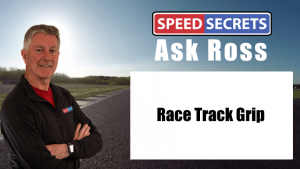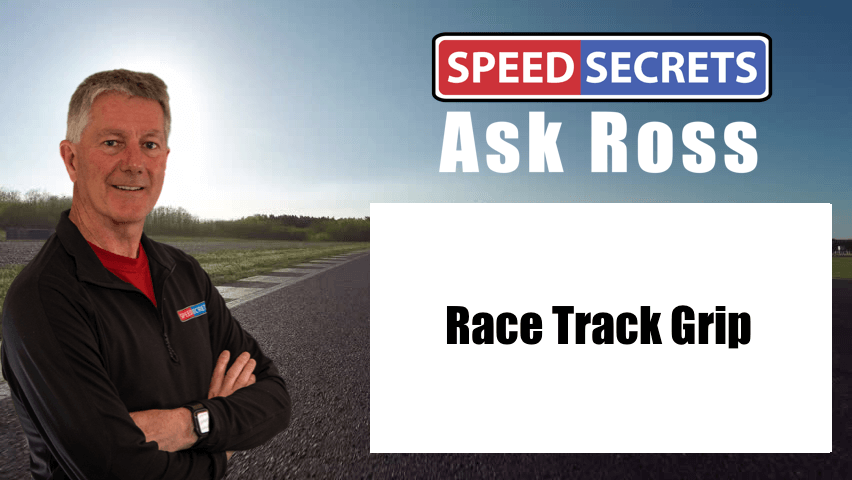 Q: “How do you go about learning the traction gradient at a new track? As a track day noob (just doing HPDE events), what scares me more than anything is running across a piece of track with a level of traction I wasn’t expecting — whether that’s because of marbles, dust, different pavement, a puddle, or even a bump. Any particular process?Coming from autocross, I didn’t realize how unnerving it would be because I’m so used to walking the course ahead of time, but that’s not an option at an HPDE. And though I’m an avid sim racer, that also doesn’t help this particular issue (at least, not at my skill level). I can’t feel small bumps in the track through my sim, even if the laser data is that accurate.”
Q: “How do you go about learning the traction gradient at a new track? As a track day noob (just doing HPDE events), what scares me more than anything is running across a piece of track with a level of traction I wasn’t expecting — whether that’s because of marbles, dust, different pavement, a puddle, or even a bump. Any particular process?Coming from autocross, I didn’t realize how unnerving it would be because I’m so used to walking the course ahead of time, but that’s not an option at an HPDE. And though I’m an avid sim racer, that also doesn’t help this particular issue (at least, not at my skill level). I can’t feel small bumps in the track through my sim, even if the laser data is that accurate.”
A: Interesting question!
First, many HPDE and track day events can or will offer an opportunity to do a track walk. Sometimes you just have to ask – and possibly be willing to get up early in the morning to do it before on-track activity begins. Certainly, walking a track gives you a good idea of where different surfaces are, along with bumps, cambers, and elevation changes that will affect the grip levels.
Since it’s a track that is new to you, start with a track map. Yup, a good old paper track map. Okay, you can use a digital one, but you must be able to make hand-written notes on it (I use an iPad with an Apple pencil). Go to SpeedSecrets.com/Trackmaps to download a map (designed for taking notes), as well as to view a short video I made about track notes.
Now that you have a track map, watch multiple in-car videos, stopping and starting it over and over again every time you notice a change in track surface, elevation or camber changes, and bumps. Draw and/or write a short note on that part of the track map. If you do this while watching a few different videos, you should come away with a very good awareness of what to look for and notice when you’re driving on track. Oh, and when you’re selecting videos to watch, look for current ones because it’s likely the track has been re-surfaced (partly or completely), or worn more.
While watching these videos, you may be able to pick up subtle clues about varying grip levels by listening to tire noise, engine note (i.e., it rising over the crest of hill, or a slight bogging down in a compression), or visibly by the speed differences between similar sections on the track.
All of this should be part of your preparation for this new track (or even a track you haven’t been to for a while, or haven’t driven many laps on).
Once you’re at and on track, you have to sample the grip levels. That means braking a little extra hard on various sections of the track; turning the steering more in the middle of a corner to see if the car/tires respond or not; being a bit more aggressive with the throttle exiting corners with different track appearances. Be smart about it, but if you don’t test the grip, you’ll never know what’s available.
Being aware of track appearance is the last, but never-ending step in the process. By looking ahead and noticing changes in the track surface, a different grip level is less likely to take you by surprise. It’s difficult to generalize too much, but often a shiny surface is more polished (from tires and even chassis components sliding along it) and less grippy; a more granular surface provides more bite with the tires; more marbles will reduce grip, as does sand, dust, and dirt kicked onto the track from other cars. This is no different from when you look ahead in the rain for puddles. It’s all about being heads-up with your driving.
Keep in mind that differences in grip levels don’t change as dramatically as we sometimes think they will. It’s easy to fall into the trap of looking at a different surfaces and assume that the grip is going to be a lot less, when it’s only a small difference.
Reading a track is definitely a skill that the best drivers have and continue to develop, so you’re on the right track (pun intended) by asking about it.

